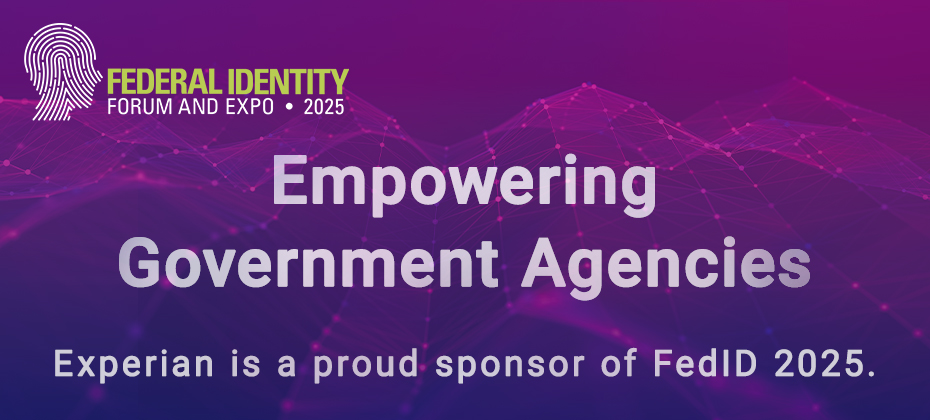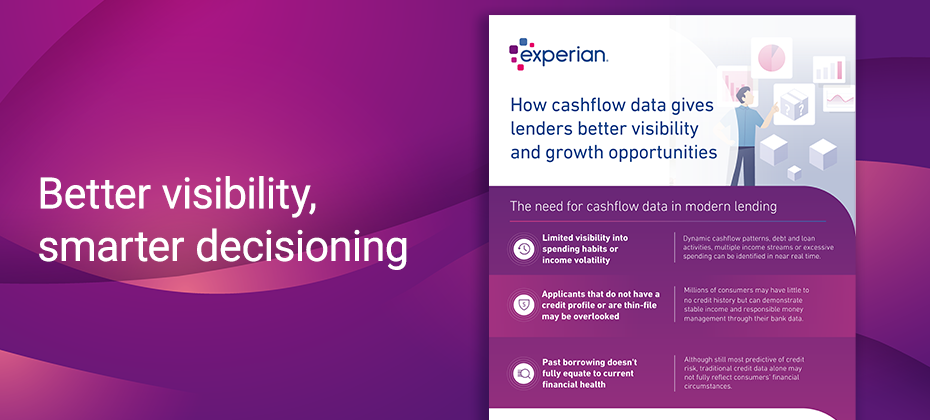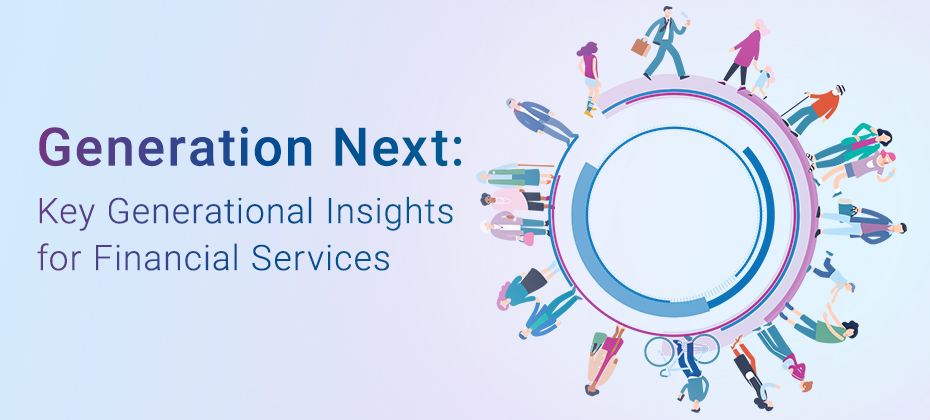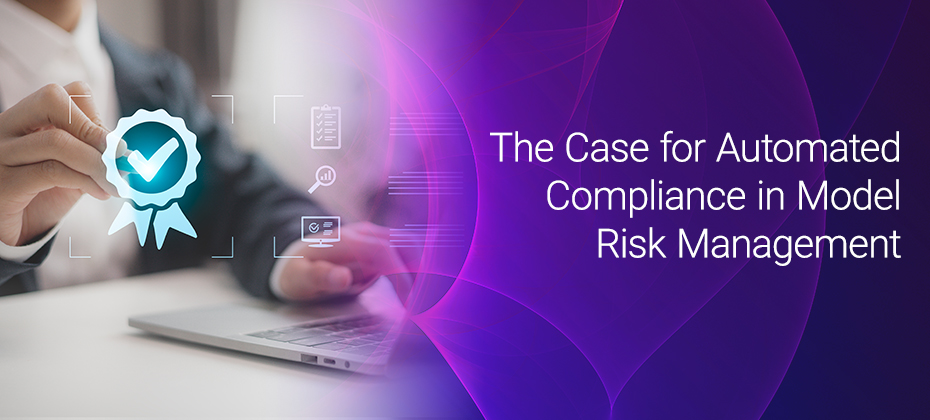Topics

Lending fraud – what is it? Lending fraud is a deceptive practice in which individuals or entities intentionally provide false or misleading information during the loan application process to secure credit or financial gain. This can include using fake identities, inflating income, forging documentation, or applying for loans without the intention of repayment. The consequences are significant: lenders suffer financial losses, consumers experience identity theft or damaged credit scores, and the economic system bears increased risk and regulatory scrutiny. Loan fraud is a growing concern across consumer, commercial, and mortgage lending sectors, affecting institutions of all sizes. How do I safeguard my organization from loan fraud? Preventing lending fraud is a complex, ongoing challenge that requires a multi-layered and holistic approach. As fraud tactics become more sophisticated, especially with the rise of generative AI and digital lending channels, financial institutions must continually evolve their defenses. Strong identity verification is the first line of defense. Lenders should implement advanced authentication tools beyond basic KYC (Know Your Customer) checks. This includes biometric verification, document verification, and device intelligence —technologies that assess the authenticity of the user and the device used during the application process. These tools can help detect synthetic identities — false identities created using a blend of real and fabricated information — increasingly used in loan fraud schemes. Another crucial strategy is real-time data analytics and behavioral monitoring. Lenders can quickly identify anomalies that may indicate fraudulent activity by analyzing applicant behavior, credit history, device usage patterns, and geolocation data in real time. For example, if an applicant submits multiple loan applications from different IP addresses in a short time frame, that could raise a red flag for potential lending fraud. Employee training and awareness are also essential. Frontline staff must be equipped to identify warning signs, such as inconsistencies in application documents or rushed, high-pressure loan requests. Regular fraud prevention training helps employees stay alert and aligned with the organization’s risk management protocols. 57% of financial institutions reported direct fraud losses exceeding $500,000 in the past year, with 25% exceeding $1 million.1 Consumers reported losing more than $12.5 billion to fraud in 2024, which represents a 25% increase over the prior year.2 In addition, robust internal controls and auditing mechanisms are critical in prevention. Organizations should regularly audit loan origination processes and investigate unusual approval patterns to detect insider fraud or systemic vulnerabilities. Finally, consumer education is a vital, often overlooked, aspect of combating loan fraud. Lenders should provide resources to help customers understand the risks of identity theft, encourage them to monitor their credit reports regularly, and empower them to report any suspicious activity. A well-informed customer base can be a valuable early warning system for fraud. With digital lending becoming the norm, preventing lending fraud means staying ahead of increasingly tech-savvy fraudsters. Leveraging data, technology, and education together builds a stronger, more resilient fraud defense framework. Lending fraud + Experian – How we can help With access to the industry’s most advanced fraud detection and identity verification tools, partnering with us gives you a potent edge in combating lending fraud. As a global leader in data, analytics, and technology, our comprehensive and accurate sets of consumer information enable you to spot risks that might be invisible through conventional means. Our approach combines rich data insights with powerful machine learning algorithms, delivering fraud prevention tools that are intelligent, scalable, and highly adaptive. Our fraud detection technologies are designed to protect every stage of the lending lifecycle. From real-time identity verification and multi-factor authentication solutions to behavioral biometrics and device intelligence, so you can detect synthetic identities, manipulated applications, and other forms of loan fraud before they lead to financial loss. In an era where trust is currency, partnering with us doesn’t just help protect against lending fraud — it enhances your reputation as a secure, responsible lender. You gain the confidence of your customers by providing safe, streamlined lending experiences while meeting compliance requirements and reducing operational risk. With us, you’re not just reacting to fraud—you’re anticipating it, preventing it, and confidently growing your business. Learn more 1State of Fraud Benchmark Report. Alloy. (2024). 2New FTC Data Show a Big Jump in Reported Losses to Fraud to $12.5 Billion in 2024. Federal Trade Commission. (2025, March 10).

In 2025, home equity lending has re-emerged as a central theme in the American financial landscape—an evolution not driven by hype, but by hard data, economic realities, and consumer behavior. As homeowners grapple with inflation, rising consumer debt, and a persistent affordability crisis in housing, the home equity line of credit (HELOC) is gaining traction as a practical, flexible, and often misunderstood financial solution.

Experian is proud to be a Thought Leadership Sponsor at this year’s Federal Identity Forum & Expo (FedID)! We’re bringing the latest innovations in fraud prevention, identity verification, and behavioral analytics – all designed to help government agencies protect access, ensure trust, and stay ahead of evolving threats.

Now in its tenth year, Experian’s U.S. Identity and Fraud Report continues to uncover the shifting tides of fraud threats and how consumers and businesses are adapting. Our latest edition sheds light on a decade of change and unveils what remains consistent: trust is still the cornerstone of digital interactions. This year’s report draws on insights from over 2,000 U.S. consumers and 200 businesses to explore how identity, fraud and trust are evolving in a world increasingly shaped by generative artificial intelligence (GenAI) and other emerging technologies. Highlights: Over a third of companies are using AI, including generative AI, to combat fraud. 72% of business leaders anticipate AI-generated fraud and deepfakes as major challenges by 2026. Nearly 60% of companies report rising fraud losses, with identity theft and payment fraud as top concerns. Digital anxiety persists with 57% of consumers worried about doing things online. Ready to go deeper? Explore the full findings and discover how your organization can lead with confidence in an evolving fraud landscape. Download report Watch on-demand webinar Read press release

In today’s evolving economic climate, lenders face a growing challenge: how to accurately assess creditworthiness — especially for consumers with limited credit histories. That’s where cash flow insights come into play. Our latest infographic illustrates how cashflow data helps lenders achieve a more comprehensive understanding of borrowers' financial health. What you'll learn: Why cashflow data is essential for modern, inclusive lending The key financial behaviors that cash flow insights can uncover How these insights help lenders expand market reach and make more precise decisions Read the infographic to learn more. View infographic

In early 2025, European authorities shut down a cybercriminal operation called JokerOTP, responsible for over 28,000 phishing attacks across 13 countries. According to Forbes, the group used one-time password (OTP) bots to bypass two-factor authentication (2FA), netting an estimated $10 million in fraudulent transactions. It's just one example of how fraudsters are exploiting digital security gaps with AI and automation. What is an OTP bot? An OTP bot is an automated tool designed to trick users into revealing their one-time password, a temporary code used in multifactor authentication (MFA). These bots are often paired with stolen credentials, phishing sites or social engineering to bypass security steps and gain unauthorized access. Here’s how a typical OTP bot attack works: A fraudster logs in using stolen credentials. The user receives an OTP from their provider. Simultaneously, the OTP bot contacts the user via SMS, call or email, pretending to be the institution and asking for the OTP. If the user shares the OTP, the attacker gains control of the account. The real risk: account takeover OTP bots are often just one part of a larger account takeover strategy. Once a bot bypasses MFA, attackers can: Lock users out of their accounts Change contact details Drain funds or open fraudulent lines of credit Stopping account takeover means detecting and disrupting the attack before access is gained. That’s where strong account takeover/login defense becomes critical, monitoring suspicious login behaviors and recognizing high-risk signals early. How accessible are OTP bots? Mentions of OTP bots on dark web forums jumped 31% in 2024. Bot services offering OTP bypass tools were being sold for just $10 to $50 per attack. One user on a Telegram-based OTP bot platform reported earning $50,000 in a month. The barrier to entry for fraudsters is low, and these figures highlight just how easy and profitable it is to launch OTP bot attacks at scale. The evolution of fraud bots OTP bots are one part of the rising wave of fraud bots. According to our report, The Fraud Attack Strategy Guide, bots accounted for 30% of fraud attempts at the beginning of 2024. By the end of the year, that number had risen to 80% — a nearly threefold increase in just 12 months. Today’s fraud bots are more dynamic and adaptive than before. They go beyond simple scripts, mimicking human behavior, shifting tactics in real time and launching large-scale bot attacks across platforms. Some bypass OTPs entirely or refine their tactics with each failed attempt. With generative AI in the mix, bot-based fraud is getting faster, cheaper and harder to detect. Effective fraud defense now depends on detecting intent, analyzing behavior in real time and stopping threats earlier in the process. Read this blog: Learn more about identifying and stopping bot attacks. A cross-industry problem OTP bots can target any organization that leverages 2FA, but the impact varies by sector. Financial services, fintech and buy now, pay later (BNPL) providers are top targets for OTP bot attacks due to high-value accounts, digital onboarding and reliance on 2FA. In one case outlined in The Fraud Strategy Attack Guide, a BNPL provider saw 25,000+ bot attempts in 90 days, with over 3,000 bots completing applications, bypassing OTP or using synthetic identities. Retail and e-commerce platforms face attacks designed to take over customer accounts and make unauthorized purchases using stored payment methods, gift cards or promo credits. OTP bots can help fraudsters trigger and intercept verification codes tied to checkout or login flows. Healthcare and education organizations can be targeted for their sensitive data and widespread use of digital portals. OTP bots can help attackers access patient records, student or staff accounts, or bypass verification during intake and application flows, leading to phishing, insurance fraud or data theft. Government and public sector entities are increasingly vulnerable as fraudsters exploit digital services meant for public benefits. OTP bots may be used to sign up individuals for disbursements or aid programs without their knowledge, enabling fraudsters to redirect payments or commit identity theft. This abuse not only harms victims but also undermines trust in the public system. Across sectors, the message is clear: the bots are getting in too far before being detected. Organizations across all industries need the ability to recognize bot risk at the very first touchpoint; the earlier the better. The limitations of OTP defense OTP is a strong second factor, but it’s not foolproof. If a bot reaches the OTP stage, it's highly likely that they've already: Stolen or purchased valid credentials Found a way to trigger the OTP Put a social engineering play in motion Fighting bots earlier in the funnel The most effective fraud prevention doesn’t just react to bots at the OTP step; it stops them before they trigger OTPs in the first place. But to do that, you need to understand how modern bots operate and how our bot detection solutions, powered by NeuroID, fight back. The rise of GenAI-powered bots Bot creation has become dramatically easier. Thanks to generative AI and widely available bot frameworks, fraudsters no longer need deep technical expertise to launch sophisticated attacks. Today’s Gen4 bots can simulate human-like interactions such as clicks, keystrokes, and mouse movements with just enough finesse to fool traditional bot detection tools. These bots are designed to bypass security controls, trigger OTPs, complete onboarding flows, and even submit fraudulent applications. They are built to blend in. Detecting bots across two key dimensions Our fraud detection solutions are purpose-built to uncover these threats by analyzing risk signals across two critical dimensions. 1. Behavioral patternsEven the most advanced bots struggle to perfectly mimic human behavior. Our tools analyze thousands of micro-signals to detect deviations, including: Mouse movement smoothness and randomness Typing cadence, variability and natural pauses Field and page transition timing Cursor trajectory and movement velocity Inconsistent or overly “perfect” interaction patterns By identifying unnatural rhythms or scripted inputs, we can distinguish real users from automation before the OTP step. 2. Device and network intelligenceIn parallel, our technology examines device and network indicators that often reveal fraud at scale: Detection of known bot frameworks and automation tools Device fingerprinting to flag repeat offenders Link analysis connecting devices across multiple sessions or identities IP risk, geolocation anomalies and device emulation signals This layered approach helps identify fraud rings and coordinated bot attacks, even when attackers attempt to mask their activity. A smarter way to stop bots We offer both a highly responsive, real-time API for instant bot detection and a robust dashboard for investigative analytics. This combination allows fraud teams to stop bots earlier in the funnel — before they trigger OTPs, fill out forms, or submit fake credentials — and to analyze emerging trends across traffic patterns. Our behavioral analytics, combined with device intelligence and adaptive risk modeling, empowers organizations to act on intent rather than just outcomes. Good users move forward without friction. Bad actors are stopped at the source. Ready to stop bots in their tracks? Explore Experian’s fraud prevention services. Learn more *This article includes content created by an AI language model and is intended to provide general information.

Financial institutions are sitting on a goldmine of data: customer transactions, credit histories, digital interactions, and more. But the real value is found when that data is transformed into insights that drive smarter decisions, faster responses, and better outcomes for both the business and consumers.

Risk management specialists, marketing departments, and customer success teams often work from different data sets, leading to inconsistent insights and missed opportunities. A unified data strategy can help break down these silos and unlock the full potential of an organization’s ability to turn raw data into actionable insights.

Powered by GenAI and increasingly accessible fraud tools, fraud threats are evolving faster than ever. Traditional fraud detection solutions alone are struggling to keep up with evolving fraud rings, fraud bots, and attack strategies, pushing businesses to explore smarter, more adaptive defenses. That’s why many organizations are turning to User and Entity Behavior Analytics (UEBA) as protection against growing threats, especially internal ones. But what exactly is UEBA, and how does it differ from other solutions, like behavioral analytics?

First mortgage delinquencies and foreclosures are increasing, particularly in later stages of delinquency. Home equity delinquencies remain low, signaling stability in that segment. Mortgage originations are up, with refinances beginning to recover. HELOC direct mail offers have surpassed first mortgage offers, driven by aggressive marketing and AVM-based personalization. Lenders using property data in marketing outperform peers relying on volume alone. Strategic focus for lenders: tighten risk analytics, integrate data into marketing, and adopt AVM-based personalization.

Fraud never sleeps, and neither do the experts working to stop it. That’s why we’re back with episode two of Meet the Maker, our video series spotlighting the brilliant minds behind Experian’s cutting-edge fraud solutions. In this episode, Nash Ali, Head of Operational Strategy, and Dave Tiezzi, Senior Vice President of Payments and New Markets, share how the power of NeuroID’s behavioral analytics and device and network intelligence, combined with Experian Link’s credit card owner verification, helps e-commerce merchants combat key fraud threats, while providing a seamless checkout experience. With decades of experience in payments and fraud, these fraud-fighting experts know exactly what it takes to stop fraud, minimize friction, and reduce chargebacks so e-commerce merchants can protect the most crucial stage of the buying process. Watch now for an exclusive look at the minds shaping the future of fraud prevention. Interested in learning more about our fraud management solutions? Watch previous episode Learn more

Understanding generational trends and preferences is more crucial than ever, especially for the financial services industry.

With increasing regulatory complexities, compliance with model risk management requirements is crucial for operational resilience.

Bot fraud has long been a major concern for digital businesses, but evolving attacks at all stages in the customer lifecycle have overshadowed an ever-present issue: click fraud. Click fraud is a cross-departmental challenge for businesses, and stopping it requires a level of insight and understanding that many businesses don’t yet have. It’s left many fraud professionals asking: What is click fraud? Why is it so dangerous? How can it be prevented? What is click fraud? A form of bot fraud, click fraud occurs when bots drive fraudulent clicks to websites, digital ads, and emails. Click fraud typically exploits application flows or digital advertising; traffic from click bots appears to be genuine but is actually fraudulent, incurring excessive costs through API calls or ad clicks. These fraudulent clicks won’t result in any sales but will reveal sensitive information, inflate costs, and clutter data. What is the purpose of click fraud? It depends on the target. We've seen click bots begin (but not complete) insurance quotes or loan applications, gathering information on competitors’ rates. In other cases, fraudsters use click fraud to drive artificial clicks to ads on their sites, resulting in increased revenue from PPC/CPC advertising. The reasons behind click fraud vary widely, but, regardless of its intent, the impacts of it affect businesses deeply. The dangers of click fraud On the surface, click fraud may seem less harmful than other types of fraud. Unlike application fraud and account takeover fraud, consumers’ data isn’t being stolen, and fraud losses are relatively minuscule. But click fraud can still be detrimental to businesses' bottom lines: every API call incurred by a click bot is an additional expense, and swarms of click bots distort data that’s invaluable to fraud attack detection and customer acquisition. The impact of click fraud extends beyond that, though. Not only can click bots gather sensitive data like insurance quotes, but click fraud can also be a gateway to more insidious fraud schemes. Fraud rings are constantly looking for vulnerabilities in businesses’ systems, often using bots to probe for back-door entrances to applications and ways to bypass fraud checks. For example: if an ad directs to an unlisted landing page that provides an alternate entry to a business’s ecosystem, fraudsters can identify this through click fraud and use bots to find vulnerabilities in the alternate application process. In doing so, they lay the groundwork for larger attacks with more tangible losses. Keys to click fraud prevention Without the right tools in place, modern bots can appear indistinguishable from humans — many businesses struggle to identify increasingly sophisticated bots on their websites as a result. Allowing click fraud to remain undetected can make it extremely difficult to know when a more serious fraud attack is at your doorstep. Preventing click fraud requires real-time visibility into your site’s traffic, including accurate bot detection and analysis of bot behavior. It’s one of many uses for behavioral analytics in fraud detection: behavioral analytics identifies advanced bots pre-submit, empowering businesses to better differentiate click fraud from genuine traffic and other fraud types. With behavioral analytics, bot attacks can be detected and stopped before unnecessary costs are incurred and sensitive information is revealed. Learn more about our behavioral analytics for fraud detection.

Experian and Plaid are teaming up to power smarter, faster, and more inclusive lending — fueled by real-time cash flow insights. The financial landscape is becoming more dynamic and digitally connected. Consumers are increasingly turning to digital platforms not only to pay bills and track spending, but to better understand their financial health, monitor their credit standing, and plan confidently for the future. This evolution presents a timely opportunity for innovation in underwriting — one that empowers consumers to take control of their financial futures and enables lenders to make faster, smarter, and more inclusive decisions. What happens when the leading global data and technology company joins forces with the largest open banking network in the world? Experian and Plaid are coming together to solve some of the most pressing challenges lenders face, bringing cash flow insights into credit decisions, seamlessly. Smarter lending: Elevating the credit decision process For lenders seeking a holistic view of borrowers to make faster, more informed decisions, this new collaboration is a game-changer. Experian and Plaid are combining real-time, unmatched cash flow data and analytics to help lenders improve decisioning, pinpoint risk precisely, and drive financial inclusion. This marks a pivotal shift in how credit is assessed, moving us toward faster, and fundamentally smarter lending decisions. This strategic collaboration delivers real-time cash flow insights in a comprehensive solution, built on core principles designed to directly enhance your lending capabilities: Speed and simplicity: Driving efficiency with seamless integration In today’s fast-paced financial landscape, efficiency in underwriting isn’t just an advantage; it’s a necessity. Our combined solution prioritizes speed and simplicity by offering easy integration through APIs. This ensures fast access to meaningful risk insights, streamlining your workflows. Imagine easily leveraging real-time cashflow risk insights directly into your existing processes for faster and smarter lending decisions. This is about delivering modern infrastructure that allows you to move at the speed of today's market, empowering your business to expand with confidence. Broader visibility: Unveiling a holistic consumer view Traditional credit scores are a reliable, crucial tool for measuring a borrower’s creditworthiness. When coupled with real-time cashflow data and risk insights, lenders are empowered with broader visibility, bringing to light a more holistic view of a borrower’s current financial reality and opportunities that may have been missed. You gain a comprehensive consumer financial picture, allowing for more precise identification of both strong financial capacity and potential risks, ultimately helping you target and acquire customers who align with your growth objectives. Smarter decisions: Enhancing models with combined intelligence The power to make truly informed decisions hinges on the quality and depth of your data. Without robust insights, risk models can be limited, impacting precision and speed. With Experian's advanced cash flow analytic capabilities and Plaid's streamlined access to real-time cash flow data via Consumer Report, you can enhance your risk assessment for smarter decisions. This synergy empowers financial institutions to expand credit access and uncover hidden risks, leading to more precise underwriting. It’s about leveraging advanced analytics in real-time to drive improved decision-making and build stronger portfolios. More inclusive lending: Expanding access, responsibly A significant challenge in lending is ensuring access for all creditworthy individuals, including those with limited traditional credit histories who may be overlooked. This represents an untapped market and a vital opportunity for responsible growth. Our solution champions more inclusive lending, enabling you to reach underserved communities and empower consumers who demonstrate strong financial capacity. This not only fosters stronger portfolios but critically helps your business grow by efficiently acquiring customers across a broader spectrum. Proven trust: Lending with confidence In the financial industry, the bedrock of any solution is trust – in the data, security, and partners. Lenders require unwavering confidence in the tools they adopt. This collaboration is built on proven trust, leveraging the reach, reliability, and security of two of the most trusted names in financial services. Experian’s expertise in credit data and consumer protection, combined with Plaid’s modern infrastructure and trusted open banking network, offers unparalleled assurance. You can securely integrate these powerful insights, knowing you are backed by industry leaders committed to best-in-class security and compliance, enabling your business to grow with confidence without compromise. Smarter lending starts now The evolution of underwriting demands a more dynamic, inclusive, and precise approach. With Experian and Plaid, you're not just adapting to change; you're leading it. Empower your organization to approve more borrowers, reduce risk more effectively, and make smarter, faster decisions for sustainable success. Ready to transform your lending strategy? Learn more about how to bring cash flow insights into your credit decisions seamlessly. Learn more